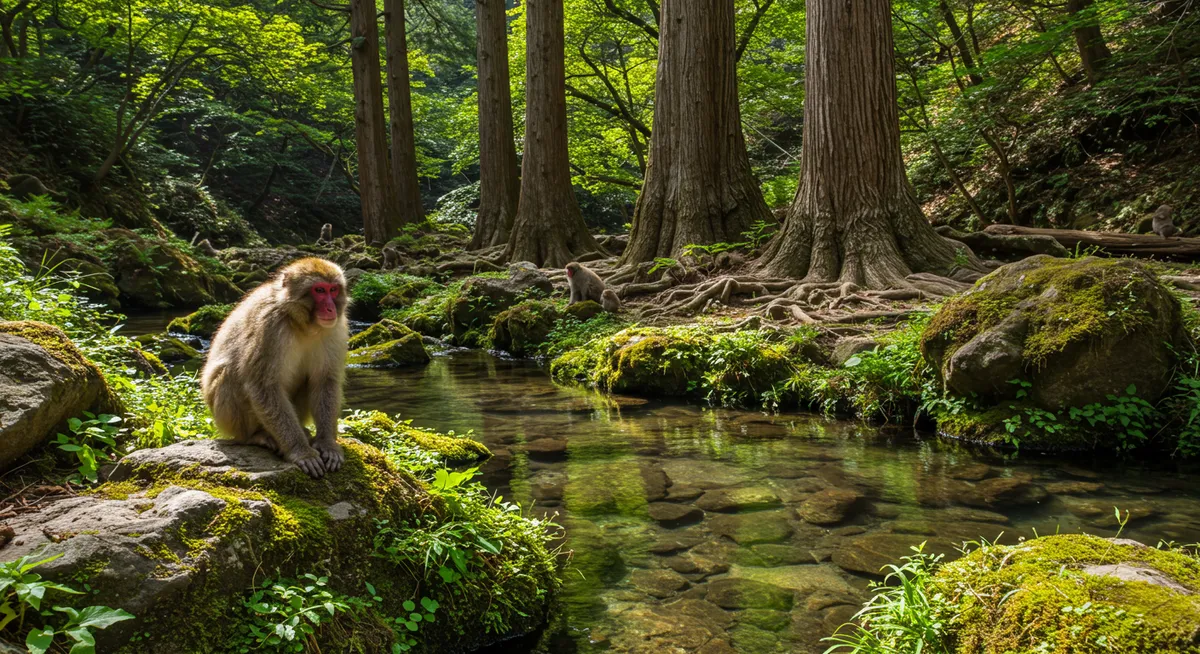
Kyoto Wildlife Spotting: A Nature Lover's Guide
Table of Contents
Want to find the best nature experiences for this destination? Chat with our nature tourism specialist!
Get Nature TipsCategory: kyoto-wildlife-spotting-guide
Unveiling Kyoto's Hidden Wildlife: A Spotter's Guide
Having explored Kyoto extensively, I've often found myself drawn beyond its famous temples to the surprising natural beauty and hidden wildlife within. Many visitors overlook that this ancient city offers incredible opportunities for Kyoto wildlife spotting. It’s not just about historical sites; Japan's rich biodiversity thrives even near urban centers. From mischievous macaques to elusive deer, observing these creatures adds a unique dimension to your visit. This guide will help you discover the best locations and tips to respectfully engage with Kyoto's wild inhabitants.
Top Locations for Wildlife Encounters in Kyoto
When planning your Kyoto wildlife spotting adventure, certain locations offer more guaranteed encounters. The most famous is the Arashiyama Monkey Park Iwatayama, where Japanese macaques roam freely. It's an unforgettable experience, seeing these agile primates in their natural habitat high above the city. For a different perspective, consider areas like Nara Park, just a short train ride away, famous for its numerous sika deer—a truly magical sight as they wander freely among temples. From my own experience, exploring the quieter trails near Mount Hiei or even specific, less-frequented Kyoto nature attractions can reveal surprising glimpses of local fauna. Arashiyama itself, beyond the Arashiyama Bamboo Grove, holds many secrets for patient observers.
Common Wildlife Species to Spot in Kyoto
Beyond the well-known monkeys and deer, Kyoto wildlife spotting can also involve a variety of bird species. Keep an eye out for elegant egrets and herons near the Kamogawa River, especially during the early morning. You might also hear the distinct call of the Japanese bush warbler in wooded areas, a true sign of spring. Smaller, more elusive creatures like the tanuki (raccoon dog) or even wild boars can be found in the deeper forests surrounding the city, though they are less commonly seen by casual visitors. I once spotted a shy tanuki near a remote shrine, emphasizing that patience truly pays off when looking for Kyoto's diverse animals. Understanding their habitats is key to successful wildlife observation.
Essential Tips for Respectful Wildlife Spotting
To ensure a positive and ethical Kyoto wildlife spotting experience, always prioritize the animals' well-being. My top tip: never feed wild animals, especially the deer in Nara or the monkeys in Arashiyama, as it can alter their natural behaviors and health. Maintain a respectful distance and avoid sudden movements or loud noises that could distress them. Bringing a good pair of binoculars will enhance your viewing without invading their space. Early mornings or late afternoons are generally the best times for spotting, as many animals are most active during these cooler periods. Exploring Kyoto's best hiking trails often presents excellent opportunities for quiet observation in their natural environment.
Seasonal Considerations for Wildlife Watching
The season profoundly impacts your Kyoto wildlife spotting opportunities. Spring brings migratory birds and newborn animals, offering fresh sightings. Summer's lush foliage can make spotting more challenging but also provides dense cover for some species. Autumn sees animals, like deer, becoming more active as they prepare for winter, and the changing leaves add stunning backdrops. Winter, paradoxically, can be excellent for birdwatching as deciduous trees lose their leaves, making birds easier to spot. Snow often reveals animal tracks, providing clues to their presence. For instance, I've found some Kyoto gardens, like those listed on Kyoto Gardens for Nature Lovers, offer surprisingly good winter birding. Always dress appropriately for the weather to maximize your comfort and patience.
Frequently Asked Questions
Can I feed the monkeys at Arashiyama Monkey Park?
Besides Nara, where can I see deer near Kyoto?
What's the best time of day for wildlife spotting in Kyoto?
Embracing the opportunity for Kyoto wildlife spotting adds a unique, natural layer to your journey through Japan’s cultural heart. From the playful macaques of Arashiyama to the graceful deer roaming tranquil parks, and the myriad of birds flitting through gardens, Kyoto's natural beauty offers a refreshing contrast to its historical grandeur. Remember to observe respectfully, maintain distance, and avoid feeding. This commitment to ethical wildlife viewing ensures these incredible creatures continue to thrive. So, next time you visit, pack your binoculars and plan to explore beyond the shrines—discover Kyoto’s wild side!